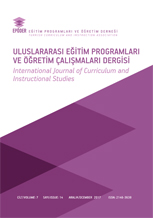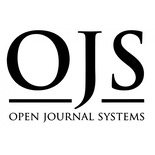A bilingual university student’s acculturation process in the United States: A linguistic case study for culturally responsive curriculum development
A Linguistic Case Study
Abstract
The present study explores and investigates how a Korean-English bilingual speaker is influenced by her native culture during her acculturation process in the United States (U.S.). This linguistic research study is designed around three main themes. The first theme is the cultural adaptation process of the participant, which is analyzed based on the participant’s perceptions about Korean daily life and customs. The second theme refers to exploring the participant’s acculturation process within the U.S. along with her socialization stages. For the third theme, the participant’s intercultural awareness towards her native culture is explored. The interview data analysis confirmed that the participant experienced a culture shock within her first school year in the U.S. The findings of the interviews indicate that the participant applied particular strategies to overcome her culture shock in order to adapt a new way of life, which would be informative for improving culturally responsive curriculum development strategies.
Downloads
References
Arslangilay, A. S. (2018a). The reflection of immigration on school culture: A qualitative study. International Journal of Instruction, 11(2), 585-602. https://doi.org/10.12973/iji.2018.11240a
Arslangilay, A. S. (2018b). Are Turkish teacher candidates ready for migrant students? Journal of Education and Learning, 7(2), 316-329. https://doi.org/10.12973/iji.2018.11240a
Barna, L. (1994). Stumbling blocks in intercultural communication. In L. A. Samovar& R. E. Porter (Eds.), Intercultural communication: A reader (12th ed., pp. 370-379). Boston, MA: Wadsworth Cengage Learning.
Chen, G. (2009). Intercultural effectiveness. In L. A. Samovar& R. E. Porter (Eds), Intercultural communication: A reader (8th ed., pp. 370-379). Boston, MA: Wadsworth Cengage Learning.
Charlebois, J. (2009). Language, culture, and social interaction. In L. A. Samovar& R. E. Porter (Eds.), Intercultural communication: A reader (8th ed., pp. 370-379). Boston, MA: Wadsworth Cengage Learning.
Clark, D. N. (2000). Culture and customs of Korea. Wesport, Connecticut: Greendwood Press.
DeCapua, A. & Wintergerst, A.C. (2016). Crossing cultures in the language classroom (2nd ed.). New York, NY: The University of Michigan Press.
Ellis, D. G. & Maoz, I. (2009). Dialogue, argument, and cultural communication codes between Israeli-Jews and Palestinians. In L. A. Samovar, R. E. Porter, & E. R. McDaniel (Eds.), Intercultural communication: A reader (12th ed., pp. 244-250). Boston, MA: Wadsworth Cengage Learning.
Hammond, Z. L. (2015). Culturally responsive teaching and the brain: Promoting authentic engagement and rigor among culturally and linguistically diverse students. Thousand Oaks CA: Sage Publications.
Hofstede, G. J. (1980). Motivation, leadership, and organization: Do American theories apply abroad? Organizational Dynamics, 9(1), 42-63.
Hofstede, G. J. (2001). Culture's consequences: Comparing values, behaviors, institutions and organizations across nations, (2nd ed.). Thousand Oaks CA: Sage Publications.
Hofstede, G. J. (2011). Dimensionalizing cultures: The Hofstede Model in Context. Online Readings in Psychology and Culture, 2(1). https://doi.org/10.9707/2307-0919.1014.
Hooker, J. (2009). The cultural iceberg. In L. A. Samovar, R. E. Porter, & E. R. McDaniel (Eds), Intercultural communication: A reader (12th ed., pp. 59-64). Boston, MA: Wadsworth Cengage Learning.
Ishii, S., Klope, D. & Cooke, P. (2009). Worldview in intercultural communication: A religo-cosmological approach. In L. A. Samovar, R. E. Porter, & E. R. McDaniel (Eds), Intercultural communication: A reader (12th ed., pp. 18-28). Boston, MA: Wadsworth Cengage Learning.
Karcı Aktaş, C., & Gündoğdu, K. (2020). An extensive evaluation study of the English preparatory curriculum of a foreign language school. Pegem Journal of Education and Instruction, 10(1), 169-214. https://doi.org/10.14527/pegegog.2020.007
Kohls, R. L. (2001). Learning to think Korean: A guide to living and working in Korea. Boston, MA: Intercultural Press.
Koo, J. H. & Nahm, A. C. (1997). An introduction to Korean culture. Elizabeth, NJ: Hollym International Corp.
Kumar, R. & Sethi, A. K. (2009). Communicating with Indians. In L. A. Samovar, R. E. Porter, & E. R. McDaniel (Eds), Intercultural communication: A reader (12th ed., pp. 244-250). Boston, MA: Wadsworth Cengage Learning.
Miike, Y. (2009). Harmony without uniformity: An Asiacentric worldview and its communicative implications. In L. A. Samovar, R. E. Porter, & E. R. McDaniel (Eds.), Intercultural communication: A reader (12th ed., pp. 18-28). Boston, MA: Wadsworth Cengage Learning.
Nisbett, R. E. (2009). Living together versus going it alone. In L. A. Samovar, R. E. Porter, & E. R. McDaniel (Eds), Intercultural communication: A reader (12th ed., pp. 18-28). Boston, MA: Wadsworth Cengage Learning.
Ogbu, J. (1987). Variability in minority responses to schooling: Nonimmigrants vs immigrants. In G. Spinler & L. Spinler (Eds.), Interpretive ethnography in education (pp. 255-280). Hillsdale, NJ: Lawrence Erlbaum.
Schmidt, R. W. (1990). The role of consciousness in second language learning. Applied Linguistics, 11(2), 129-158.
Storti, C. (1998). Figuring foreigners out: A practical guide. Yarmouth, ME: Intercultural Press, Inc.
Wolcott, H. F. (2008). Etnography: A way of seeing. Walnut Creek, CA: AltaMira Press.





